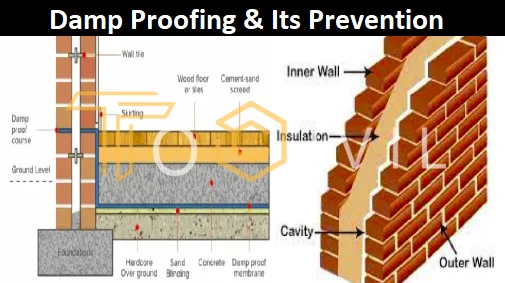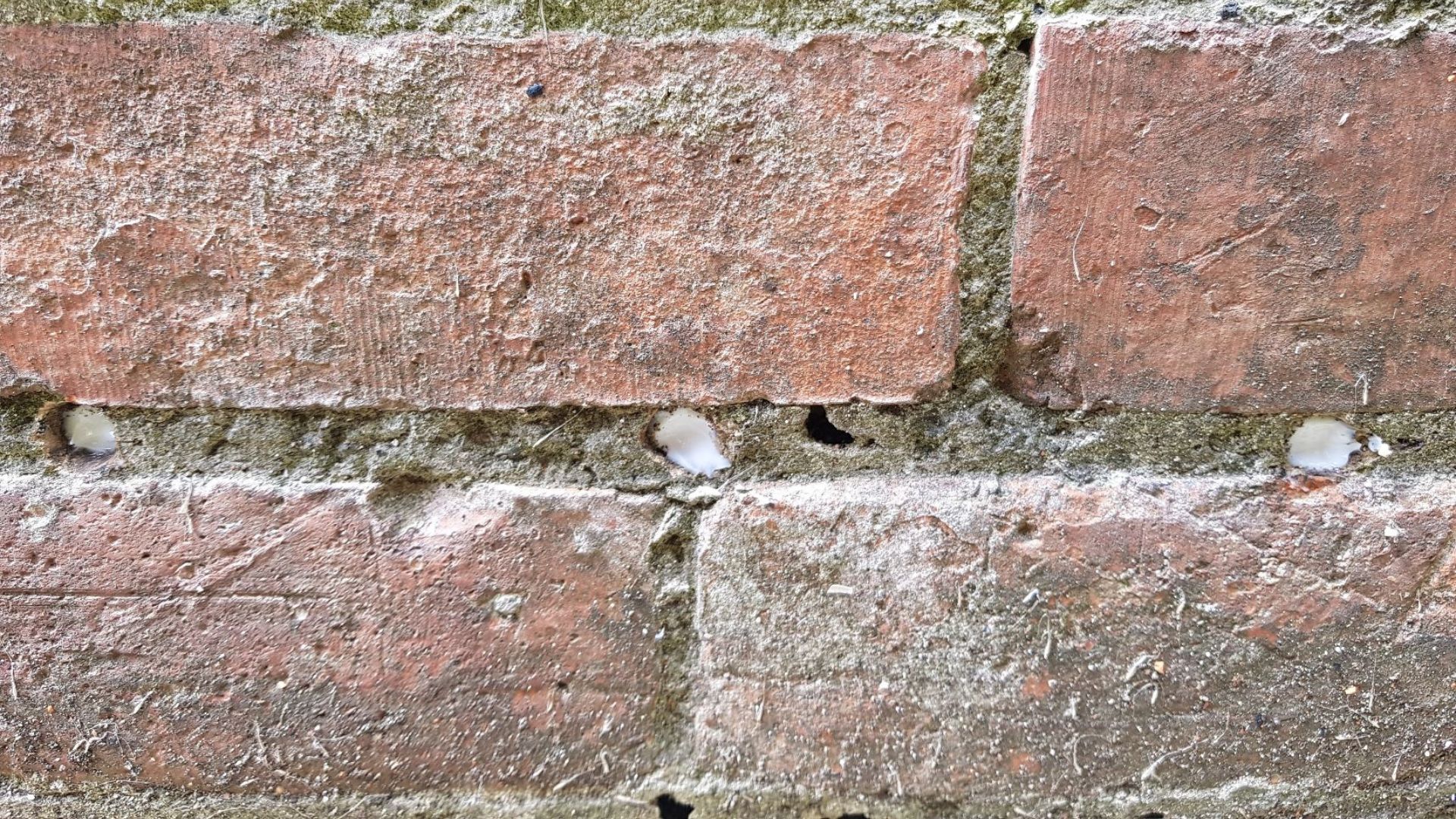Reliable ways to manage humidity with mould treatment newcastle
Reliable ways to manage humidity with mould treatment newcastle
Blog Article
Checking Out the Different Techniques and Solutions for Effective Damp Proofing
Moisture in structures presents substantial difficulties to both architectural stability and interior air quality. Numerous methods and remedies have actually emerged to combat this pervasive issue. From standard damp-proof membranes to innovative chemical therapies, each method uses unique advantages. Comprehending these alternatives is necessary for reliable wetness control. Nevertheless, choosing the right option depends upon particular structure problems and requirements, prompting more expedition into the most effective wet proofing methods readily available.
Understanding the Reasons For Moisture
Dampness can emerge from various resources, recognizing these reasons is essential for effective removal. Generally, wetness originates from 3 primary sources: increasing damp, penetrating moist, and condensation. Climbing wet takes place when groundwater travels up via permeable materials, such as brick or rock, typically as a result of a lack of an effective obstacle (mould removal newcastle). Permeating damp is normally triggered by outside factors, consisting of roofing leakages, defective gutters, or damaged wall surfaces, permitting water to penetrate a residential or commercial property. Condensation, on the other hand, results from excess wetness airborne, commonly exacerbated by inadequate ventilation and temperature distinctions, leading to water droplets basing on surface areas. Recognizing these underlying concerns is important, as each kind of wetness calls for a customized technique for remediation. Correct analysis helps in determining one of the most reliable solutions, inevitably safeguarding the architectural honesty of a building and enhancing interior air quality
Typical Damp-Proof Membranes

Chemical Damp-Proofing Solutions
Chemical damp-proofing solutions offer an innovative strategy to stop dampness intrusion in structures. These methods typically include the application of liquid chemicals that penetrate masonry and create a barrier versus climbing damp. Frequently utilized chemicals include silanes, siloxanes, and other water-repellent agents that react with surface materials to produce a hydrophobic layer.The application procedure usually needs exploration holes right into the walls, infusing the chemical service, and allowing it to cure. This approach is specifically helpful for older structures where standard damp-proof membrane layers might be not practical. Moreover, chemical damp-proofing can be less disruptive and much more cost-efficient than comprehensive remodelling projects.While effective, these services depend on correct application and ecological conditions for peak performance. Normal upkeep and tracking are important to assure the longevity of the damp-proofing treatment. In general, chemical damp-proofing represents a functional option for protecting buildings versus moisture-related damage
Cavity Wall Surface Construction Strategies
Tooth cavity wall building and construction strategies supply many advantages, specifically in dampness control and energy performance. By integrating an air void between 2 layers of masonry, these walls efficiently alleviate water ingress while boosting insulation. This combination not only secures frameworks from wetness however additionally adds to decreased energy consumption.
Benefits of Dental Caries Walls
When thinking about reliable damp proofing methods, the advantages of tooth cavity walls attract attention prominently. Cavity walls contain two separate layers, creating an air gap that efficiently decreases wetness penetration. This style lessens the threat of dampness, as the outer wall surface acts as a barrier against rainfall and water access. In addition, dental caries wall surfaces enhance thermal insulation, which adds to power effectiveness by lowering heat loss. They also offer sound insulation, helping to produce a quieter indoor environment. Furthermore, the air gap permits air flow, which assists in wetness control and decreases the chance of mold and mildew development. These advantages not just enhance the overall comfort of a structure yet likewise add to its long life and structural honesty.
Dampness Control Techniques
Efficient dampness control methods are essential in dental caries wall surface construction to ensure long-term protection against dampness. One main approach includes the unification of weep holes, which help with water drainage from the tooth cavity, stopping accumulation. In addition, making use of breathable membranes can help manage wetness degrees while allowing entraped vapor to get away. Proper placement of insulation is also essential, as it needs to not block water drainage courses. Making sure that the outer leaves of the dental caries wall surface are created with waterproof products enhances overall longevity. Regular upkeep checks are important to identify any obstructions or damages early, securing the framework's honesty. Inevitably, a mix of these techniques forms a robust defense against wetness invasion in tooth cavity walls.
Insulation and Energy Efficiency
Insulation plays a vital duty in boosting power effectiveness within cavity wall building. By incorporating insulating products, these wall surfaces produce a thermal barrier that reduces heat loss and reduces power usage. Efficient insulation not only helps keep a steady indoor temperature level however likewise mitigates the risk of dampness, as it protects against condensation within the wall surface tooth cavity. Various strategies, such as using stiff foam boards or mineral woollen, can be used to accomplish perfect insulation performance. Additionally, correct setup is necessary to ensure that gaps and gaps are minimized, which can otherwise compromise power performance. Eventually, a well-insulated cavity wall surface adds substantially to total sustainability and reduces heating and air conditioning costs for homeowners.
Exterior Damp Proofing Techniques
Outside damp proofing techniques are important for shielding structures from dampness infiltration. Two effective methods include the application of water-proof membrane layers and the installation of French drains pipes. These services assist alleviate water buildup and maintain the honesty of structures.
Waterproof Membrane Application
While various approaches exist for preventing dampness access, the application of water-proof membrane layers remains a highly effective exterior damp proofing method. These membranes are typically made from materials such as polyethylene, rubber, or customized asphalt, providing a durable obstacle versus water penetration. The setup procedure involves applying the membrane to the outside surface areas of foundations or walls, making certain total coverage to protect against leaks. Correct bond and securing at joints are vital to making the most of performance. Water-proof membrane layers can be used in numerous kinds, consisting of fluid finishings and sheet membranes, enabling for versatility based on the particular demands of the framework. This method not just secures structures from moisture however likewise improves their longevity and structural honesty.
French Drainpipe Setup
One efficient method for taking care of groundwater and preventing dampness buildup around a building's foundation is the installation of a French drainpipe. This water drainage system is composed of a trench full of crushed rock and a perforated pipeline that redirects surface area water away from the foundation. Proper setup requires mindful preparation, guaranteeing that the drain slopes away from the framework to assist in perfect water flow. Furthermore, the place of the drain is vital; it should be positioned in locations susceptible to pooling or excess moisture. Normal upkeep, including clearing up debris from the gravel and making sure the pipeline stays unobstructed, is important for lasting efficiency. Inevitably, a well-installed French drain check here can greatly minimize the risk of water-related problems in foundations and cellars.
Interior Waterproofing Approaches
Interior waterproofing approaches are important for shielding a building's inside from dampness infiltration and prospective water damages. These techniques generally include the application of customized materials and methods made to create a wetness barrier within the structure. One common strategy is using water resistant layers or sealants on wall surfaces and floorings, which prevent wetness from penetrating surfaces.Additionally, setting up indoor drainage systems, such as sump pumps, can effectively take care of water build-up in basements and creep spaces. An additional approach involves using vapor obstacles, which are set up to prevent moisture motion from the ground right into living spaces.Moreover, addressing any kind of splits or spaces in wall surfaces or structures with ideal sealants ensures an extensive defense against water breach. By applying these interior waterproofing approaches, homeowner can greatly decrease the risk of mold development, structural damages, and various other moisture-related concerns. Correct implementation of these strategies is essential for long-term security and building stability.
Normal Upkeep and Assessment Practices
Regular maintenance and evaluation practices are vital for guaranteeing the lasting performance of wet proofing remedies in any type of building. Routine checks allow building proprietors to determine early signs of moisture breach, such as peeling off paint, mold and mildew growth, and moldy odors. These indications can indicate underlying problems that require prompt attention.Inspections must be carried out a minimum of annually, concentrating on prone areas like cellars, creep areas, and exterior wall surfaces. During these analyses, home owners need to check out sealers, drainage systems, and air flow to verify they function correctly.Additionally, keeping rain gutters and downspouts is vital, as blocked systems can lead to water buildup near the structure. Carrying out a regular upkeep routine, in addition to prompt repair services, can significantly expand the life expectancy of wet proofing steps and protect the structural integrity of the building. Positive actions eventually add to the general health and wellness of the living atmosphere.
Regularly Asked Inquiries
How Much Time Does Damp Proofing Normally Last?
The duration of moist proofing effectiveness differs, typically lasting between 20 to half a century. Elements such as application top quality, environmental problems, and upkeep methods greatly affect the long life of the moist proofing therapy.

Can I Damp Evidence My Home Myself?
The specific considered the expediency of DIY damp proofing. With correct study and the best products, it is possible. They also identified the significance of professional advice to ensure durable performance and protect against future concerns.
What Are the Indicators of Inadequate Damp Proofing?
Indicators of inefficient wet proofing include persistent moldy odors, noticeable mold and mildew development, peeling paint, moist spots on wall surfaces, and timber decay - damp proofing newcastle. House owners must attend to these concerns quickly to stop more damage and health worries
Does Damp Proofing Affect Indoor Air Top Quality?

Just How Much Does Expert Damp Proofing Price?
Specialist damp proofing costs differ substantially, usually varying from $1,000 to $5,000 depending on the building's size, the degree of the wet issue, and chosen techniques. Each scenario calls for a tailored assessment for precise prices. Generally, dampness originates from three primary sources: increasing moist, passing through damp, and condensation. When considering effective moist proofing techniques, the benefits of dental caries wall surfaces stand out plainly. Exterior damp proofing methods are vital for securing structures from wetness infiltration. While numerous techniques exist for preventing wetness access, the application of water resistant membrane layers remains an extremely effective outside wet proofing technique. Indications of ineffective moist proofing consist of persistent musty smells, noticeable mold and mildew development, peeling paint, moist patches on walls, and timber degeneration.
Report this page